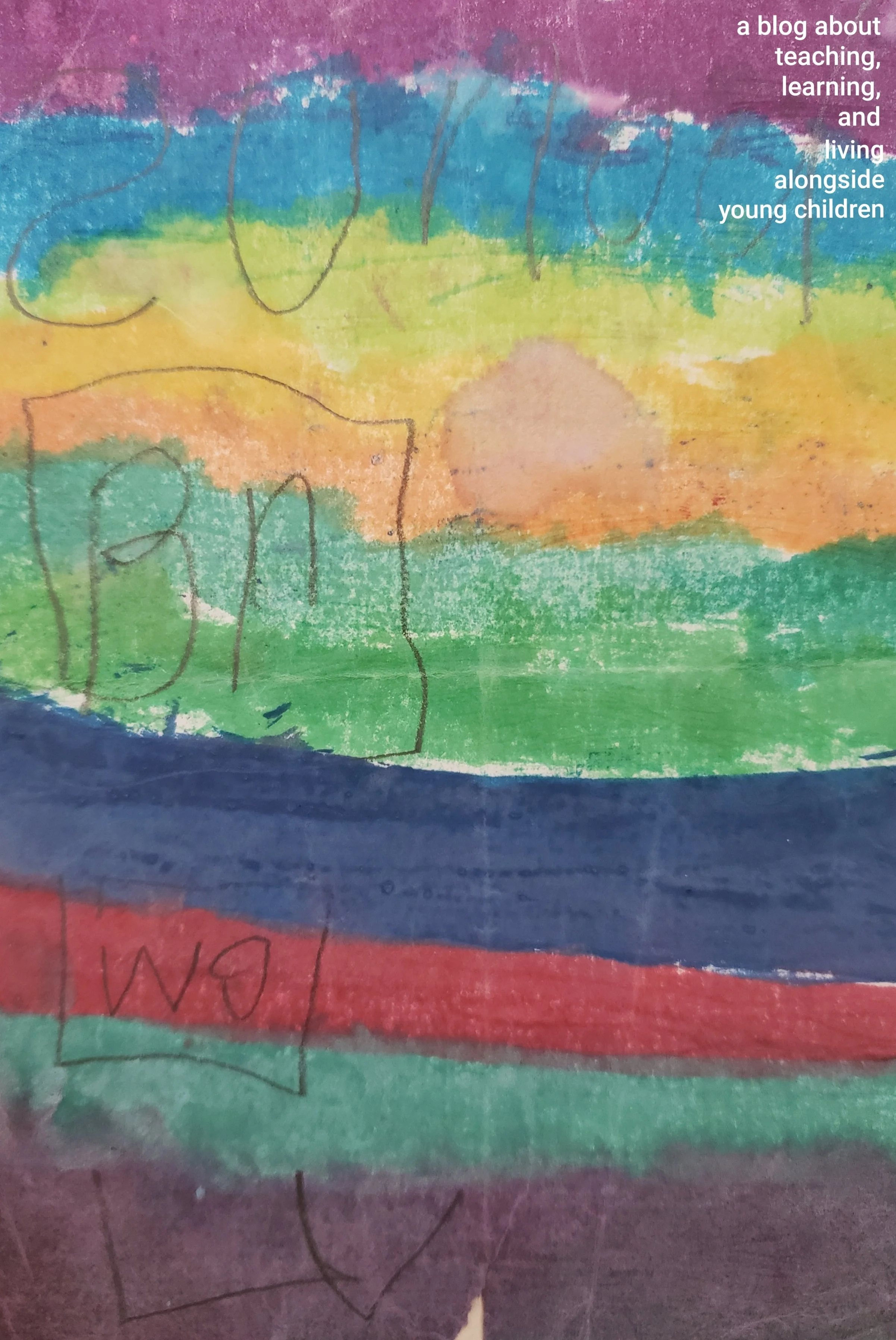The Child's Job Is To Test
/Illustrated by Mila A., age 4
To children, the world is full of endless marvels (doesn’t this already seem like something adults could learn from?). Humans feel curiosity before we learn fear or disappointment. Our instinct is toward connection, understanding, and innovation. From birth, we see the way children make constant discoveries: Look at my hand! Whoa, it moves! I am moving it! What an amazing power. At the same time, children face frequent obstacles to their curiosity, desires, and drives: Why is mom upset? This pasta sauce feels amazing. I thought she’d like to feel it, too. Children live in a state of constant flux, learning more about life in their families and the environments around them all the time. I would argue that we all do, but adults have already learned what to anticipate in most situations and (for the most part) how to regain equilibrium when they go wrong. These skills can only be learned through experience, trial and error. Testing.
Because it is the work of the child to test, assess, and re-challenge themselves in their environment, we can take some pressure off those situations that likewise challenge us. We don’t have to take testing behaviors personally. Yes, it is incredibly frustrating when a child discovers gravity via the dumping of cereal. Yes, it is hard to hear a preschooler say, “You are not my best friend.” Our adult perspectives are informed by our own experiences and meanings we’ve made over the entire course of our lives. We know the cereal will have to be cleaned up. We remember the intense pain of being told we were no longer friends. That meaning is impacted further by the responsibility we feel. Everything can feel so big. This is why it is so important to step back and see children experimenting with materials, emotions, and self for what it is: developmental, normal, one moment in a series of moments. The testing of boundaries is not a moral failing of either the child or caregiver. It is simply the road along which learning happens. We can either journey this way together or put up roadblocks (likely leading your child to find brilliant — however risky or prohibited — detours).
To test is to research. People are natural-born scientists — academics studying the ever-shifting text of the world around them. There is so much to know, but it never ends. This is the reason why there is no magic lecture. We, supportive adults, must remember that the impulse to try things and provoke feedback from the surrounding environment of people and things is inherently good, active, and necessary to the development of human beings. To view testing as only about behaviors that inconvenience adults is to diminish the value of how children learn -- and learning is the very thing we want them to do forever.
Young children, especially, are scientists tenured at the intersection of nature and nurture. The drive to constantly learn more is natural -- children have a physiological need to experience novelty and integrate new information into their thinking. Supporting that growth is about providing meaningful experiences and useful, developmentally appropriate feedback. The way we as adults respond nurtures either the development, refinement, or inhibition of children’s understandings.
So, how do we value children’s testing and help them manage the job? We have little true control over the development of a person, but we do, without a doubt, make crucial impacts on how that development feels and in which direction it heads. Do we encourage exploration? Do we make space for children to draw their own conclusions, even when we know those conclusions will have to change? Do we take a step back to assess why a child might behave in a certain way? Adult judgments are informed by how we ourselves have been nurtured, and so we view children’s behavior through the lens of everything we have internalized about right and wrong, scarcity and abundance, success and failure, morality and immorality. The challenge is to drop judgment in favor of curiosity and to recognize that adults are imperfect, biased observers. In doing this, we can shift our perspective to one of still imperfect but conscious supporters. When we drop our judgments and learn to respond with empathetic discernment, we model new ways of being. We teach. And we inspire ever new research projects in the children who study us.


